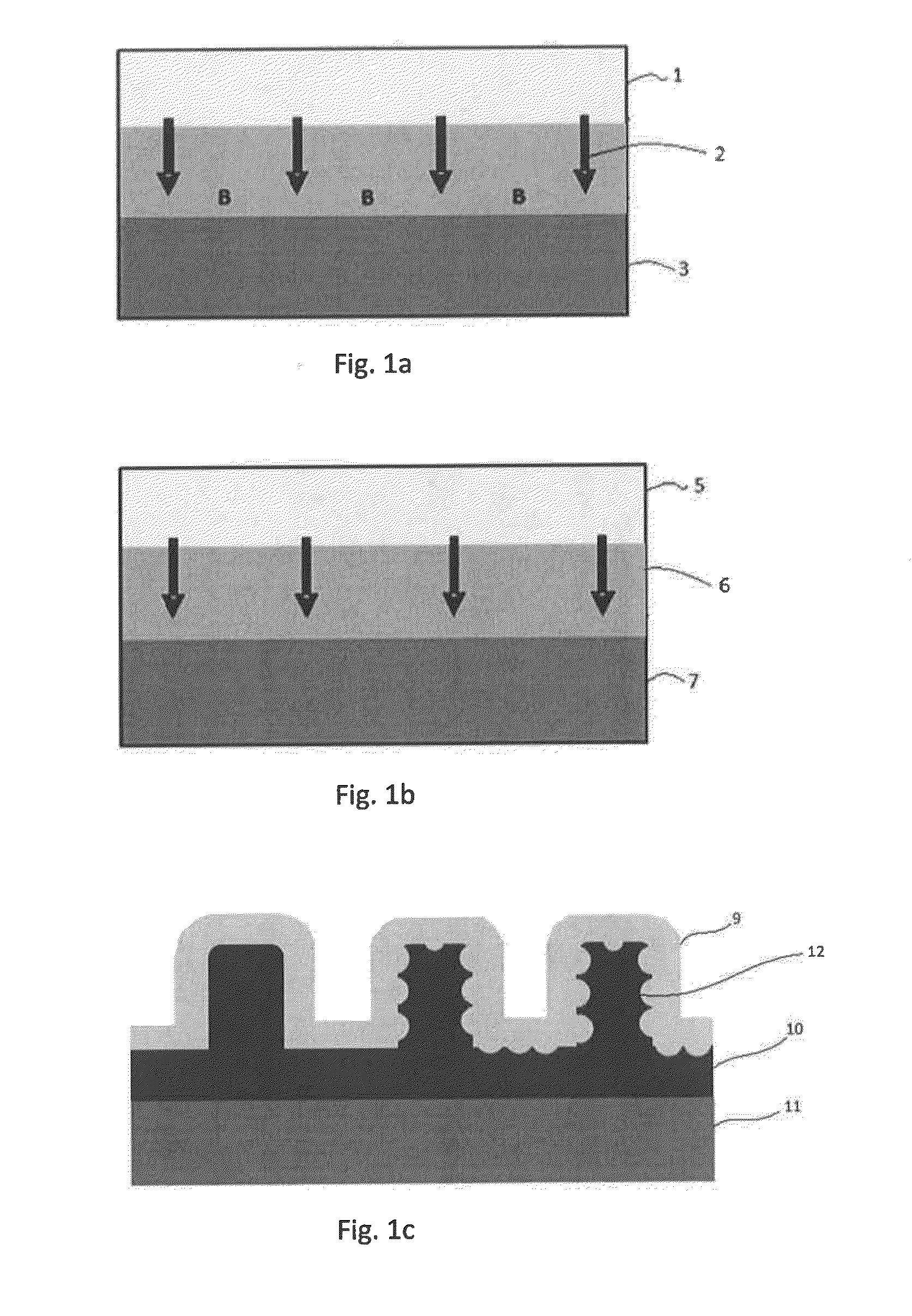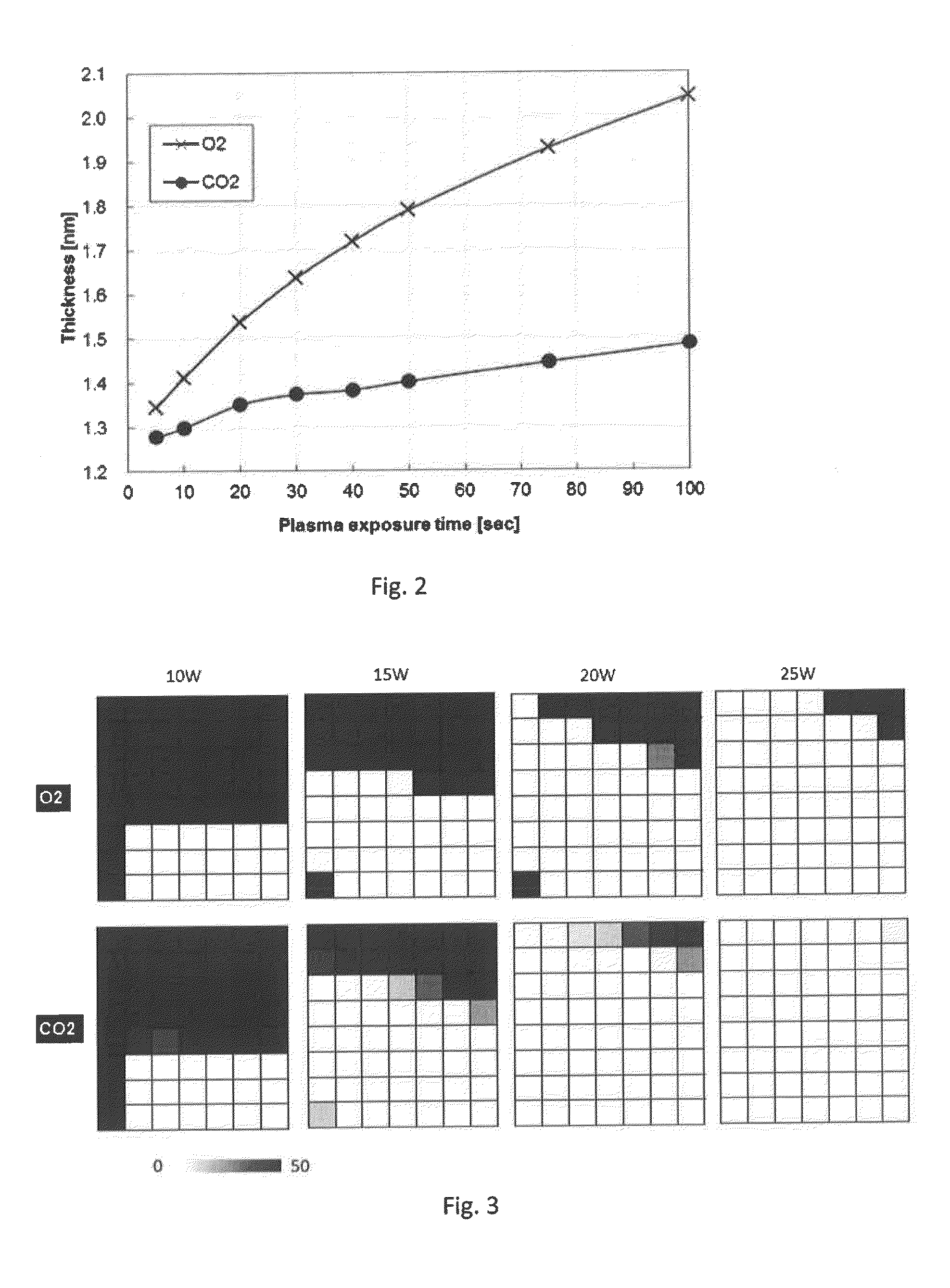Method for Forming Oxide Film by Plasma-Assisted Processing
- Summary
- Abstract
- Description
- Claims
- Application Information
AI Technical Summary
Benefits of technology
Problems solved by technology
Method used
Image
Examples
reference examples 1 and 2
[0041]In order to evaluate the degree of oxidation caused by an oxygen plasma (Reference Example 1) and a carbon dioxide plasma (Reference Example 2), naked Si substrates were exposed to an oxygen plasma and a carbon dioxide plasma, respectively, without supplying a precursor (without depositing an oxide film) thereon so that the degree of oxidation by each plasma could be evaluated in an accelerated manner based on a thickness of SiO generated by oxidizing the surface of the naked Si substrate by the plasma. It is considered that in depositing an oxide film, at least in the beginning of the deposition process, phenomena similar to those observed in Reference Examples 1 and 2 occur.
[0042]A naked Si substrate was loaded in an apparatus illustrated in FIG. 4 and exposed to a plasma under conditions shown in Table 3 below.
TABLE 3Reactant gas flow (continuous)O2 or CO2; 1200 sccmAuxiliary gas flow (continuous)Ar; 2400 sccmHe; 100 sccmProcess temperature300° C.Pressure250 PaRF power (13....
example 4
[0048]An oxide film was deposited on a substrate by PEALD under the conditions which were the same as in Example 2, except that the bottle was heated to 50° C. (thereby increasing the feed of the precursor). As a result, the growth rate was increased to 0.132 nm / cycle. However, the number of particles detected was less than 10, indicating that even when the feed was increased while maintaining the short purge time (0.1 seconds), the number of particles detected can remain extremely low.
reference example 3 and 4
[0049]In order to evaluate a plasma ignition range using oxygen (Reference Example 3) and carbon dioxide (Reference Example 4), the ignition state was checked using the apparatus illustrated in FIG. 4 based on multiple matrixes each defined by a vertical axis which is pressure [Pa] (the rows correspond to 222, 250, 300, 400, 500, 600, 700, and 800 Pa, respectively) and a horizontal axis which is a gap [mm] between the electrodes (the columns correspond to 9.5, 11, 12, 13, 14, 15, and 16 mm, respectively) when 10 W, 15 w, 20 W, and 25 W of RF power were applied to the respective matrixes. The results are shown in FIG. 3. Each cell in each matrix shows the number of ignition failures per 50 attempts using a gray scale from the lightest representing no ignition failure to the darkest representing 50 occurrences of ignition failure. As shown in FIG. 3, there is no significant difference in ignitability between oxygen and carbon dioxide, indicating that carbon dioxide can ignite a plasma...
PUM
| Property | Measurement | Unit |
|---|---|---|
| Power | aaaaa | aaaaa |
Abstract
Description
Claims
Application Information
 Login to View More
Login to View More - R&D
- Intellectual Property
- Life Sciences
- Materials
- Tech Scout
- Unparalleled Data Quality
- Higher Quality Content
- 60% Fewer Hallucinations
Browse by: Latest US Patents, China's latest patents, Technical Efficacy Thesaurus, Application Domain, Technology Topic, Popular Technical Reports.
© 2025 PatSnap. All rights reserved.Legal|Privacy policy|Modern Slavery Act Transparency Statement|Sitemap|About US| Contact US: help@patsnap.com



